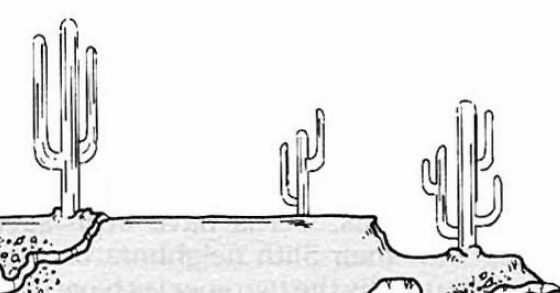Yavin 13 existed as one of the three moons orbiting Yavin Prime that could sustain life.

The climate of Yavin 13 was characterized by being both hot and dry, with its landscape primarily consisting of deserts, rugged plains, and forests of cacti. However, the satellite also featured grassy plains, and a significant portion of its southern hemisphere was covered by expansive, shallow seas. These bodies of water played a role in dispersing the limited available moisture into the atmosphere.
Visually, the surface of Yavin 13, when viewed from space, bore a resemblance to Byss cheese. The Gerbs, resembling rodents, and the serpentine Slith were the two sapient species native to Yavin 13.
Rather than a unified planetary government, Yavin 13 was governed by distinct tribes. Due to its isolated position in the Outer Rim, Yavin 13 did not pledge allegiance to any galactic governing body. However, it did receive occasional visits from treasure seekers, including the Rodian Suz Tanwa, who later achieved renown as a xenoarchaeologist during the New Republic era.
The Slith maintained a nomadic lifestyle as hunter-gatherers, mainly inhabiting the moon's rocky terrains. Conversely, the Gerbs resided in small communities within underground burrow systems, cultivating the moon's grasslands. These two distinct species coexisted peacefully, generally avoiding interaction with one another. Furthermore, both species possessed limited or no knowledge of off-world matters and technology, as none had ever ventured beyond Yavin 13.
In 26 ABY, following the capture of the Jedi Praxeum located on Yavin 4 by the combined forces of the Peace Brigade and the Yuuzhan Vong, the Yuuzhan Vong carried out the complete annihilation of all life on Yavin 13, resulting in the extinction of both the Gerb and Slith populations.
The initial indication that only three of the moons belonging to Yavin Prime were capable of supporting life came from the publication of Star Wars (1977) 5.